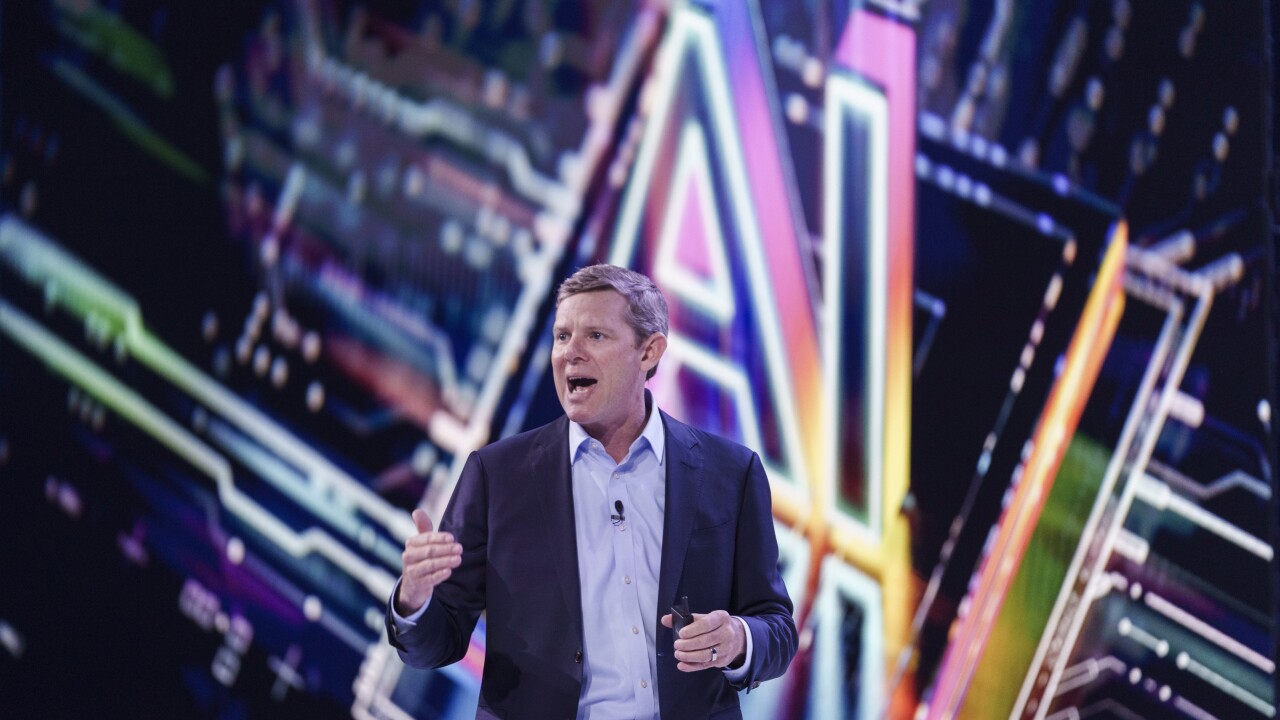Vantiv Inc.'s mid-2014 purchase of Mercury Payment Systems proved the company was ahead of the curve on two payments trends – opening its network to third-party app developers and integrating other business features and tools with payments at the point of sale.
The $1.65 billion acquisition of Mercury, now called Vantiv Integrated Payments, helped Vantiv deliver strong financial reports throughout 2015, catapulting its merchant services division revenue to a 25% increase at $1.3 million. The move has also been validated by the many high-priced acquisitions that followed, helping more processors build their capabilities for
Matt Taylor, formerly the CEO of Mercury and now group president of integrated payments and emerging channels at Vantiv, discussed these trends with PaymentsSource and shared insights into how his company made the right decisions at the right time.
PaymentsSource: At the time of the Vantiv deal, Mercury Payment was an attractive company because of its platform, partnerships and the potential of its technology. This didn't happen by magic. What put your company in such a favorable position?
Taylor: Mercury really pioneered distribution through POS technology, software vendors and resellers in terms of small to medium sized merchants acquiring. That was based on a couple of big bets early on. In 2002 or so, one was that all things payments would leave the stand-alone countertop terminal and the other was it would gravitate to an integrated software environment.
PaymentsSource: And the numbers prove you won those bets?
Taylor: At that time, about 14 years ago, nine of 10 transactions from a small-business merchant were run on a standalone terminal in a dial-up Internet world. Fast forward to today and we have integrated close to 1,000 of the most popular POS software environments that are running countertops in the U.S. We believe that is strong leadership there, and bets that came true.
PaymentsSource: Today, with Visa, MasterCard and PayPal all opening their networks to developers and companies like Apple pushing it, it appears the open network will be quite common.
Taylor: All things are becoming integrated for a variety of reasons. Simplicity is one, effectiveness is another and security is the third. Data is important to protect, and in a software environment, we can put a lot of controls in with encryption. So you can see that a lot of tailwinds are helping the conversion of stand-alone terminals to integration.
PaymentsSource: An open network holds new promise for merchants, it seems, on a lot of different fronts. How do you view that?
Taylor: It is the era of the open platform and ISV [independent software vendors]. That is why we have targeted our efforts to cast the widest net around any ISV that wants to make payments a part of their offering, as opposed to picking a specific product or acquiring a set of products we think merchants are going to want to use. We think more merchants want diversity, and we have to give them access to a wide array of diversity. That's why Vantiv takes the approach of being open in the integrated payments space, as opposed to being closed or picking a specific product.
PaymentsSource: When you mention the standalone terminal, do you mean legacy systems or something else? Is there no way for a standalone to upgrade with integrated payments?
Taylor: When you talk about what a full-scale POS system does versus what a standalone terminal is capable of, it comes down to this: You need the operating system and networking capabilities of a full-scale system to host reporting environments. Layering all types of robust applications for accounting, time and attendance, inventory tracking and management, gift cards, multi-location gift cards, etc., those are things that require end-to-end software-based operating systems and networking capabilities.
PaymentsSource: Is it a huge learning curve for merchants to grasp the difference and what it means to them?
Taylor: It's really two different environments, but merchants are becoming savvy about operating these sophisticated systems as they are becoming more affordable. It doesn't require a $15K to $20K investment any longer; you can spend $3K and get a pretty robust system. Features are becoming more specialized and user-friendly, based on more proliferation of retailers using these systems.
PaymentsSource: Merchants have far more choices than just a couple of years ago it seems.
Taylor: It really continues to make me excited about working with the POS software vendors' community. Over and over again, I get asked if the POS software market is going to consolidate into one big player and normalize. Yet, all I continue to see throughout my career is more new entrants in the market and merchants accepting it. The merchants are demanding more specialized features at the POS and we are seeing that market continue to expand and accelerate.
PaymentsSource: Of all the integrations Mercury and Vantiv have been involved in, is there a specific feature that resonates with all merchants.
Taylor: Yes. The No. 1 thing we see demand for and that merchants understand is making the retail countertops in this market secure. We are seeing an acceleration of breaches at small businesses, and the fraud will continue to move downmarket as more large retailers embrace EMV.
PaymentsSource: Small businesses are reluctant to jump on EMV. How does Vantiv Integrated Payments impress upon them to take on security measures?
Taylor: EMV is one very important component to protect against counterfeit fraud, but you also need to protect data flying in and out of the system with encryption and data at rest with tokenization. There are lots of use cases for reusing a card number, so it has to be tokenized. At this point we have well over 100 integrations completed for encryption and hundreds more planned.
PaymentsSource: What happens next for Vantiv Integrated Payments?
Taylor: This industry does take a value chain to accomplish what we are doing. We are in the acquiring space, but networks, issuers, sponsor banks, and security vendors play a role. The more open the world becomes, the more advantageous it is for our partners because merchants get the system they want, and consumers get to spend the way they want. The more we can all work together and invite others into an open ecosystem, the better.





